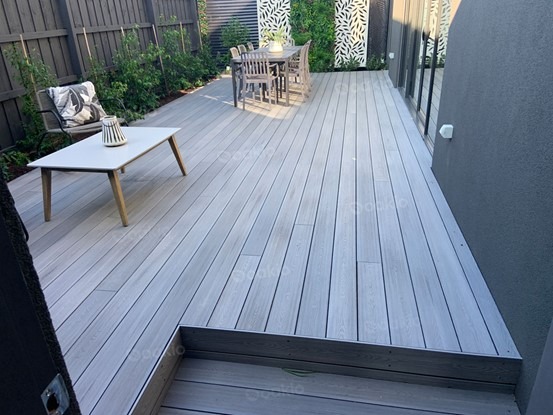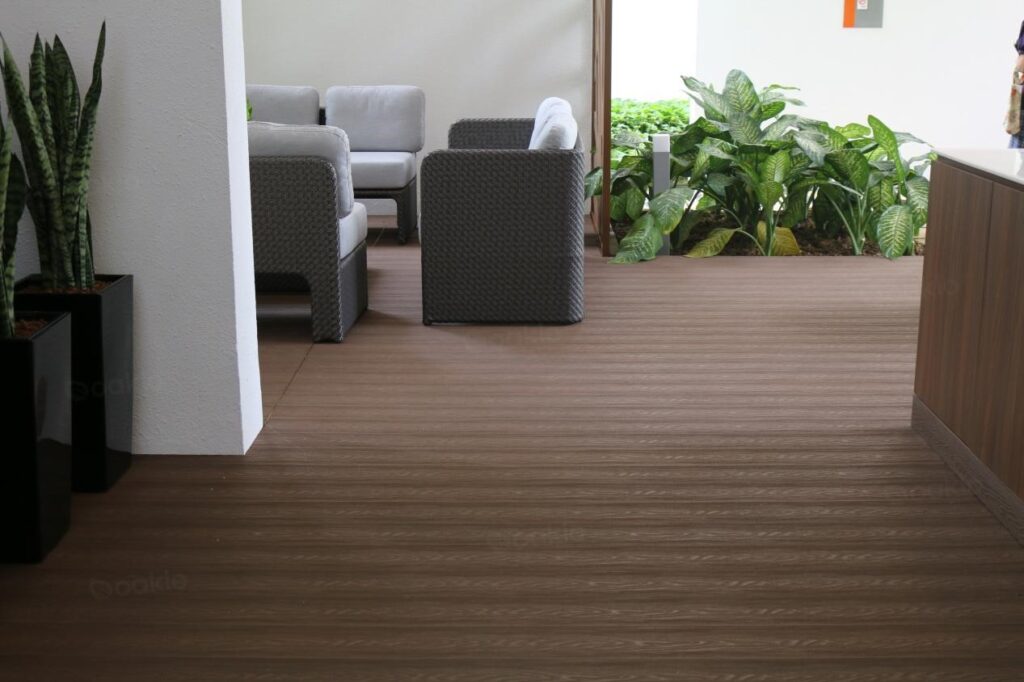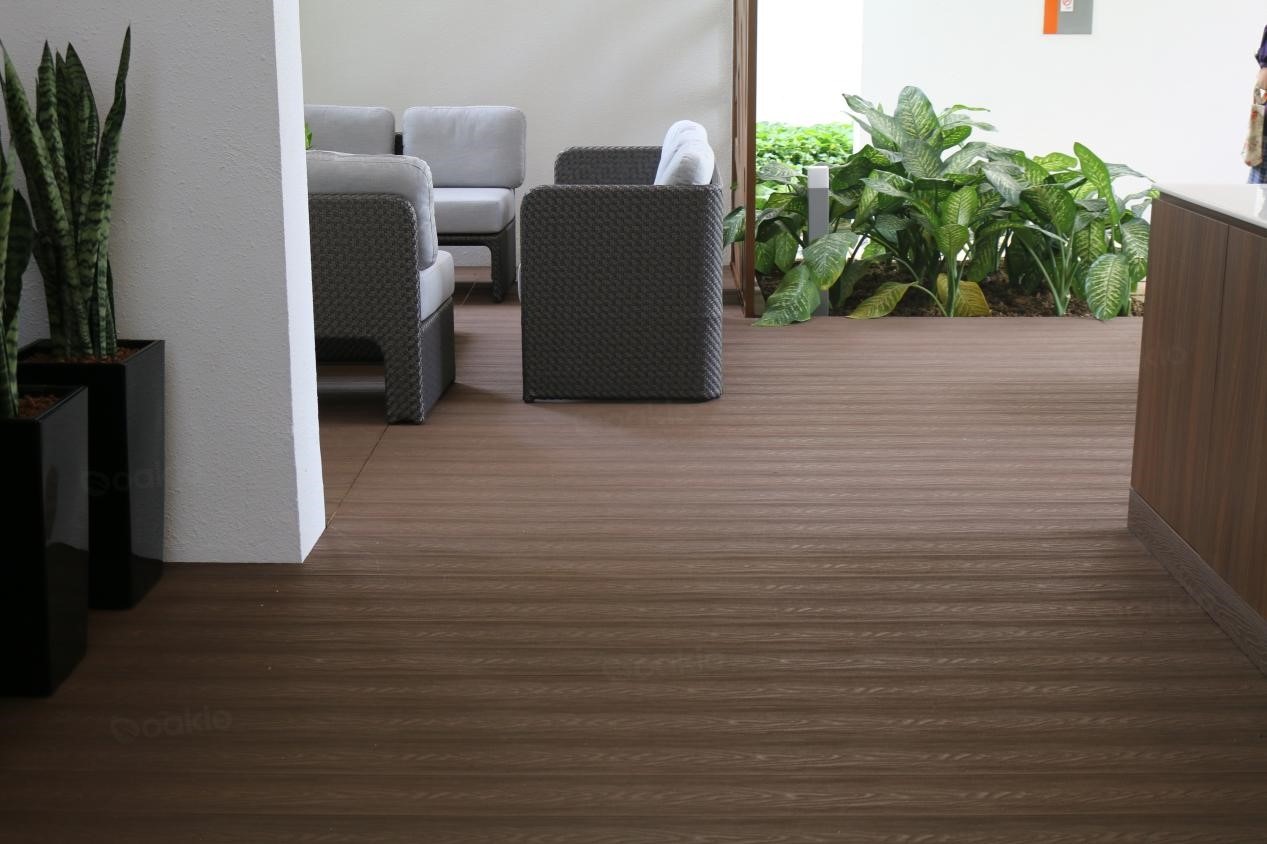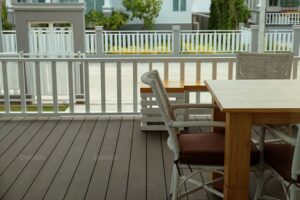How to Remove Stains From Composite Decking
Maintaining the pristine appearance of your composite decking is essential for preserving its beauty and longevity. Over time, outdoor elements, spills, and various contaminants may leave unsightly stains on the surface. Fortunately, removing stains from composite decking is a manageable task with the right approach. Whether dealing with food and beverage spills, mold, or other blemishes, understanding effective stain removal methods is key to keeping your outdoor space looking its best. In this guide, we’ll explore practical techniques and tips on how to effectively remove stains from composite decking, ensuring that your investment remains vibrant and stain-free for years to come.
Stain-resistance Feature of Composite Decking
The stain resistance of composite decking can be attributed to its unique composition. Unlike traditional wood, which is porous and susceptible to absorbing liquids, composite decking is engineered to repel stains effectively. The combination of wood fibers and plastic creates a non-porous surface that forms a robust barrier against various staining agents.

This stain-resistant nature makes composite decking an ideal option for outdoor spaces where spills, stains, and discoloration are common concerns. Whether used in residential settings, commercial properties, or public areas, composite decking proves its mettle in high-traffic zones, where maintaining a pristine appearance is paramount. Besides, it is also very easy to clean composite decking with simple tools.
The Way to Remove Stain from Composite Decking
In most cases, you can easily remove stains from composite decking through simple cleaning. The tools used may vary for different stains.

Fix 1: Mold Stain
To remove mold stains from composite decking, follow these steps using basic household tools:
Tools Needed:
1. Soft-Bristle Brush: Ensure it won’t scratch or damage the composite decking.
2. Bucket: For mixing cleaning solution.
3. Protective Gear: Gloves and safety glasses to protect your hands and eyes.
4. Cleaning Solution: Create a mixture of 1 part white vinegar and 3 parts water.
Steps:
1. Prepare the Area:
– Clear decking of any furniture or items.
2. Mix Cleaning Solution:
– In a bucket, mix one part white vinegar with three parts water.
3. Apply Cleaning Solution:
– Wet the affected area with the cleaning solution.
– Allow it to sit for 10-15 minutes to penetrate the mold.
4. Scrub with Soft Bristle Brush:
– Gently scrub the mold-stained area using a soft-bristle brush.
– Work in the direction of the decking’s grain.
5. Rinse with Water:
– Rinse the area thoroughly with clean water to remove the cleaning solution and loosened mold.
6. Inspect and Repeat if Necessary:
– Check the area for remaining stains.
– If some stains persist, repeat the process.
Note:
– Avoid Harsh Chemicals: Do not use chlorine bleach or abrasive cleaners as they can damage the composite decking material.
– Test in an Inconspicuous Area: Before applying the cleaning solution to a visible area, test it in a small, inconspicuous spot to ensure it doesn’t cause discoloration or damage.
By following these steps, you can effectively remove mold stains and clean composite decking.
Fix 2: Oil/Food Stain
To remove food stains, such as oil or cream, from composite decking, follow these steps using common household tools:
Tools Needed:
1. Soft-Bristle Brush: Ensure it won’t scratch or damage the decking.
2. Bucket: For mixing cleaning solution.
3. Protective Gear: Gloves and safety glasses to protect your hands and eyes.
4. Cleaning Solution: Create a mixture of mild dish soap and warm water.
Steps:
1. Remove Loose Debris:
– Sweep away any loose debris or dirt from the decking surface.
2. Mix Cleaning Solution:
– In a bucket, mix warm water with a small amount of mild dish soap. Do not use harsh chemicals.
3. Apply Cleaning Solution:
– Apply the soapy solution to the food stain on the decking.
4. Let It Sit:
– Allow the cleaning solution to sit on the stain for a few minutes, allowing it to penetrate and loosen the food particles.
5. Scrub with Soft Bristle Brush:
– Gently scrub the stained area with a soft-bristle brush.
– Work in the direction of the decking’s grain to avoid scratches.
6. Rinse with Water:
– Rinse the area thoroughly with clean water to remove the soapy residue and lifted food particles.
7. Inspect and Repeat if Necessary:
– Check the area for remaining stains.
– If needed, repeat the cleaning process.
8. Dry the Decking:
– Allow the decking to air-dry completely.
Notes:
– Avoid Abrasive Tools: Do not use abrasive pads or brushes that may scratch the composite decking.
– Prompt Cleaning: Attend to food stains promptly to prevent them from setting.
By following these steps, you can effectively remove oil or food stains from your composite decking while preserving its appearance. Regular cleaning and maintenance will contribute to the longevity and aesthetics of your outdoor space.
Conclusion
The versatility of stain-resistant composite decking extends beyond residential applications, proving its mettle in high-traffic areas like commercial decks and poolside zones. This low-maintenance solution aligns seamlessly with the modern lifestyle, where convenience and longevity are paramount.
Keeping your composite decking looking great is easy. Just clean composite decking regularly, quickly clean up spills, and follow the recommended maintenance tips. A simple mixture of white vinegar and water or mild dish soap solution, coupled with a soft-bristle brush, can effectively remove stains from composite decking. Doing this will make sure your decking stays vibrant and welcoming. Plus, using these stain removal methods helps protect your investment and keeps your outdoor space looking fantastic for a long time!
Trending Reading
What Are the Differences Between the WPC Board and PVC Board?
[2024 Update] How Long Does WPC Decking Last?











